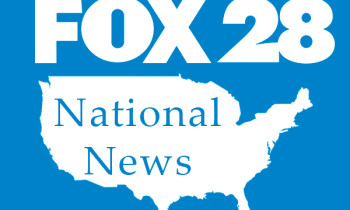
Salary dissatisfaction, lack of appreciation and poor work-life balance are corporate America’s top frustrations — according to the nation’s HR pros.
A new survey of 1,000 human resource professionals revealed the biggest challenges facing the workforce today, along with the pain points HR problem solvers are feeling in their departments.
Twenty-nine percent of respondents said feeling underpaid is the most common source of discontent for workers at their company, along with being unappreciated (26%), poor work-life balance (25%) and dissatisfaction with benefits (23%).
And according to the survey, the most common types of issues that get brought to the HR department are rooted in poor communication (44%), rule violations (40%), toxic negativity (38%), and gossip (37%).
ð¡ << Broadcast-ready version of this research story >> ð¡
Training and upskilling talent (39%) and finding the right talent (36%) top the list of HR challenges. Meanwhile, 31% of HR professionals often deal with workplace etiquette issues, and 20% frequently mediate romance-related conflicts.
Conducted by Talker Research and commissioned by isolved for Human Resource Professional Day on Sept. 26, the report also found that only 9% of HR professionals complete their to-do list daily.
Almost half (42%) of respondents work off-hours, while 28% feel overwhelmed by their workload, estimating they’d need to outsource 31% of their tasks to manage effectively.
To alleviate this, more than three-fourths of HR professionals surveyed (77%) said it’s important that they are trained to use AI (artificial intelligence) in their job roles.
Of those whose companies have already adopted AI, 81% said it’s being used within their HR department’s workflow. And 34% of HR tasks are handled by AI, on average.
Seeing how this frees up space for other pressing matters, more than eight in 10 (81%) of those using AI to streamline and automate everyday tasks reported increased capacity for interpersonal connections.
“In the ever-evolving landscape of HR, efficiency is key,” said Amy Mosher, chief people officer at isolved. “It’s imperative that HR leaders advocate on behalf of their departments for advanced tools and resources that empower HR professionals to truly support workers. This study revealed that HR roles are incredibly challenging, especially when it comes to solving interpersonal issues. Providing HR departments with better tools and resources will allow them to be fully present so they can better handle sensitive challenges effectively.”
Stories from the survey revealed some of the problems America looks to HR to solve and ranged from expected to sad to outright bizarre. In fact, 41% of the HR pros surveyed said that many of the interpersonal issues they are tasked with solving would shock the average person.
One respondent reported having to prevent strange rituals in a colleague’s office, while there were several cases where employees brought unconventional pets, like snakes or large reptiles, to the office without prior approval.
Other unusual occurrences included incidents of stalking, dealing with an interviewee’s enraged mother and reports that the workplace was haunted, leading to requests for office exorcisms.
Given these challenges, 30% of HR professionals feel mentally drained, 24% are burnt out, and 34% are considering a career change.
Mosher added, “AI advancements and adopting better resources can ease the strain on an already stretched HR department, allowing for better productivity and happiness within companies.”
Lastly, when asked what they wish the rest of corporate America knew about HR professionals, 57% said they just want everyone to know that “We’re people too. We have feelings and hard days at work, just like everyone else.”
CORPORATE AMERICA’S BIGGEST FRUSTRATIONS
Survey methodology:
Talker Research surveyed 1,000 American HR professionals; the survey was commissioned by isolved and administered and conducted online by Talker Research between July 26 and August 6, 2024.
We are sourcing from a non-probability frame and the two main sources we use are:
Traditional online access panels — where respondents opt-in to take part in online market research for an incentiveProgrammatic — where respondents are online and are given the option to take part in a survey to receive a virtual incentive usually related to the online activity they are engaging in
Those who did not fit the specified sample were terminated from the survey. As the survey is fielded, dynamic online sampling is used, adjusting targeting to achieve the quotas specified as part of the sampling plan.
Regardless of which sources a respondent came from, they were directed to an Online Survey, where the survey was conducted in English; a link to the questionnaire can be shared upon request. Respondents were awarded points for completing the survey. These points have a small cash-equivalent monetary value.
Cells are only reported on for analysis if they have a minimum of 80 respondents, and statistical significance is calculated at the 95% level. Data is not weighted, but quotas and other parameters are put in place to reach the desired sample.
Interviews are excluded from the final analysis if they failed quality-checking measures. This includes:
Speeders: Respondents who complete the survey in a time that is quicker than one-third of the median length of interview are disqualified as speedersOpen ends: All verbatim responses (full open-ended questions as well as other please specify options) are checked for inappropriate or irrelevant textBots: Captcha is enabled on surveys, which allows the research team to identify and disqualify botsDuplicates: Survey software has “deduping” based on digital fingerprinting, which ensures nobody is allowed to take the survey more than once
It is worth noting that this survey was only available to individuals with internet access, and the results may not be generalizable to those without internet access.


